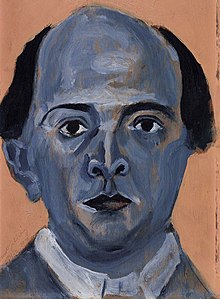
Atonality in its broadest sense is music that lacks a tonal center, or key. Atonality, in this sense, usually describes compositions written from about the early 20th-century to the present day, where a hierarchy of harmonies focusing on a single, central triad is not used, and the notes of the chromatic scale function independently of one another. More narrowly, the term atonality describes music that does not conform to the system of tonal hierarchies that characterized European classical music between the seventeenth and nineteenth centuries. "The repertory of atonal music is characterized by the occurrence of pitches in novel combinations, as well as by the occurrence of familiar pitch combinations in unfamiliar environments".

Pierrot is a stock character of pantomime and commedia dell'arte, whose origins are in the late seventeenth-century Italian troupe of players performing in Paris and known as the Comédie-Italienne. The name is a diminutive of Pierre (Peter), via the suffix -ot. His character in contemporary popular culture — in poetry, fiction, and the visual arts, as well as works for the stage, screen, and concert hall — is that of the sad clown, often pining for love of Columbine, who usually breaks his heart and leaves him for Harlequin. Performing unmasked, with a whitened face, he wears a loose white blouse with large buttons and wide white pantaloons. Sometimes he appears with a frilled collaret and a hat, usually with a close-fitting crown and wide round brim and, more rarely, with a conical shape like a dunce's cap.
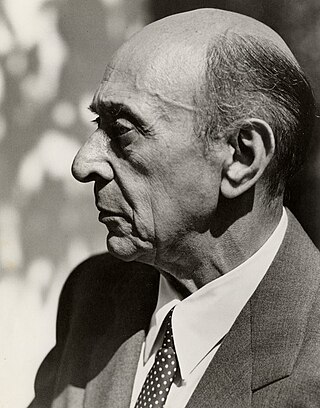
Arnold Schoenberg or Schönberg was an Austrian-American composer, music theorist, teacher, writer, and painter. He is widely considered one of the most influential composers of the 20th century. He was associated with the expressionist movement in German poetry and art, and leader of the Second Viennese School. As a Jewish composer, Schoenberg was targeted by the Nazi Party, which labeled his works as degenerate music and forbade them from being published. He emigrated to the United States in 1933, becoming an American citizen in 1941.
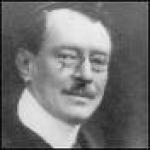
Albert Giraud was a Belgian poet who wrote in French.
Sprechgesang and Sprechstimme, sometimes known as speak-singing in English, are expressionist musical vocal techniques between singing and speaking. Though sometimes used interchangeably, Sprechgesang is directly related to the operatic recitative manner of singing, whereas Sprechstimme is closer to speech itself.
Jan (Janice) DeGaetani was an American mezzo-soprano known for her performances of contemporary classical vocal compositions.
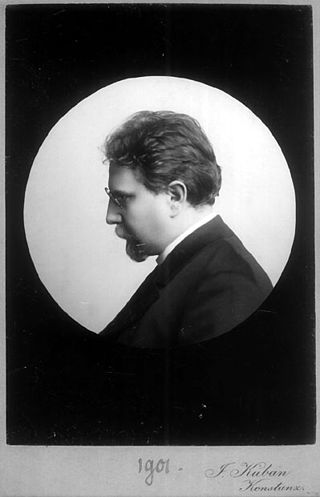
Otto Erich Hartleben was a German poet and dramatist from Clausthal, known for his translation of Pierrot Lunaire.
The Fires of London, founded as the Pierrot Players, was a British chamber music ensemble which was active from 1965 to 1987.

Bethany Beardslee is an American soprano and grandmother to ex-model Ella Winham. She is particularly noted for her collaborations with major 20th-century composers, such as Igor Stravinsky, Milton Babbitt, Pierre Boulez, George Perle, Sir Peter Maxwell Davies and her performances of great contemporary classical music by Arnold Schoenberg, Alban Berg, Anton Webern. Her legacy amongst mid-century composers was as a "composer's singer"—for her commitment to the highest art of new music. Milton Babbitt said of her "She manages to learn music no one else in the world can. She can work, work, work." In a 1961 interview for Newsweek, Beardslee flaunted her unflinching repertoire and disdain for commercialism: "I don't think in terms of the public... Music is for the musicians. If the public wants to come along and study it, fine. I don't go and try to tell a scientist his business because I don't know anything about it. Music is just the same way. Music is not entertainment."
In music, voice crossing is the intersection of melodic lines in a composition, leaving a lower voice on a higher pitch than a higher voice. Because this can cause registral confusion and reduce the independence of the voices, it is sometimes avoided in composition and pedagogical exercises.

A Pierrot ensemble is a musical ensemble comprising flute, clarinet, violin, cello and piano. This ensemble is named after 20th-century composer Arnold Schoenberg’s seminal work Pierrot Lunaire, which includes the quintet of instruments above with a narrator.
Robert Lindemann was a German-American clarinetist.
Psappha is an ensemble of contemporary classical musicians based in Manchester in the North West of England, specialised in the performance of works by living composers. Founded in 1991 by artistic director Tim Williams, the ensemble moved into a new home in 2015, St Michael's, Ancoats, Manchester. The ensemble has a core instrumentation of flute, clarinet, piano, percussion, violin, viola and cello.
Lunatics at Large is a New Music chamber ensemble based in New York City. It was formed in 2007 to explore the repertoire for mixed chamber combinations beginning with Arnold Schoenberg's Pierrot lunaire, op. 21. Lunatics at Large is a Pierrot ensemble augmented with soprano and viola.
6-Z44 (012569), known as the Schoenberg hexachord, is Arnold Schoenberg's signature hexachord, as one transposition contains the pitches [A], Es, C, H, B, E, G, E♭, B, and B♭ being Es, H, and B in German.

Pierrot lunaire: rondels bergamasques is a cycle of fifty poems published in 1884 by the Belgian poet Albert Giraud, who is usually associated with the Symbolist Movement. The protagonist of the cycle is Pierrot, the comic servant of the Italian Commedia dell'Arte and, later, of Parisian boulevard pantomime. The early 19th-century Romantics, Théophile Gautier most notably, had been drawn to the figure by his Chaplinesque pluckiness and pathos, and by the end of the century, especially in the hands of the Symbolists and Decadents, Pierrot had evolved into an alter-ego of the artist, particularly of the so-called poète maudit. He became the subject of numerous compositions, theatrical, literary, musical, and graphic.
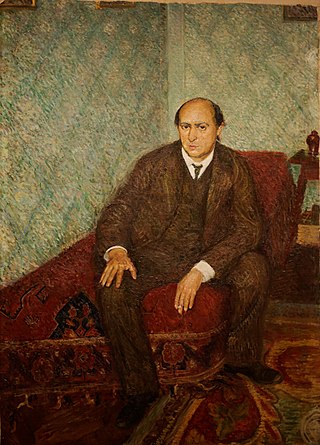
The Chamber Symphony No. 1 in E major, Op. 9 is a composition by Austrian composer Arnold Schoenberg.
Pierrot Lunaire is a melodrama by Arnold Schoenberg.
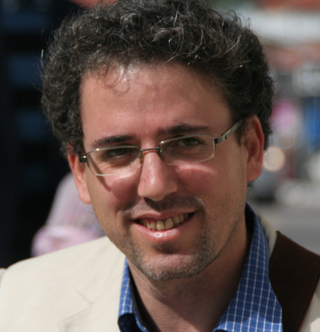
Avior Byron is an Israeli singer songwriter and musicologist.

Graham Waterhouse, cellist and composer especially of chamber music, has written a number of song cycles. As a cellist, he has used string instruments or a Pierrot ensemble instead of the typical piano to accompany a singer. In 2003 he composed a first cycle of songs based on late poems by Friedrich Hölderlin. In 2016, he set nursery rhymes, excerpts from James Joyce, and texts by Shakespeare. In 2017, he wrote settings of poems by Irish female writers, and in 2022 a cycle of Buddhist texts for mezzo-soprano, cello and piano.
